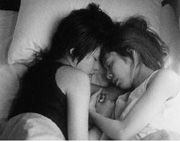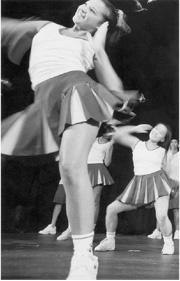A LITTLE SISTER to SIFF, the weeklong Women in Cinema fest showcases femaledirected films (which make up less than 8 percent of all industry output). WIC has an admirable mission, but like anything else about the movies, its offerings are a mixed bag. Out of the festival’s 18 features and docs, I saw nine titles, and out of those, the most impressive is Scotland’s Ratcatcher, which, incidentally, centers on a boy.
WOMEN IN CINEMA
runs November 3-9 at Egyptian
Set in the early ’70s, the picture presents a vivid tableau of an impoverished Glasgow neighborhood. Like a more focused Harmony Korine, director Lynne Ramsay concentrates her narrative on James, a pensive-looking 12-year-old who lives in a crumbling apartment complex. Powerfully visual, the movie’s most prominent imagery is that of garbage; due to a strike, refuse is strewn about, mounting on sidewalks, courtyards, and entranceways. Kids play by sorting through the garbage, chasing rats, and sitting on bulging plastic trash bags like beanbag chairs. An intimate scene occurs between James and a girl when they wash each other’s lice-infested hair. The subtitled Ratcatcher isn’t exactly a feel-good story, and James is hardly a hero—but the film is admirably executed in a humble sort of way, with solid performances from the entire cast. (Look for it to open in early December.)
A woman who loves a woman is young forever, wrote Anne Sexton, and what could be more appropriate for a women’s film fest than a movie about a frustrated lesbian? “Why am I a girl?” moans the butchy lovelorn protagonist of Shindo Kaze’s Love/Juice. Sharing a small Tokyo apartment with a flirtatious, doll-like roommate, she pines more than just sisterly love. Bathed in soft light, the film boasts some handsome shots but takes a rather tame approach to sexuality. Still, it’s a rarity for stateside audiences more accustomed to seeing Japanese cinema represented by Kurosawa and samurai flicks.
Fans of the Iranian New Wave may appreciate Mariam Shariar’s Daughters of the Sun, which only flirts with lesbianism. A young woman’s family dresses her like a boy to work in a carpet factory. There, she meets another woman who falls for her. Not exactly a Persian version of Yentl, the film is slow and subdued, with very little yapping between the characters.
BUT IF TALK is what you want, check out Sunday’s filmmaker brunch and panel. B. Ruby Rich, the Bay Area author of Chick Flicks: Theories and Memories of the Feminist Film Movement and regular contributor to Salon.com, will lead a discussion on “the female gaze.” (Festival info: 464-5830 and www.seattlefilm.com.)
Among other festival attractions, exotic international settings can often make a so-so film more interesting. Like 1994’s SIFF hit Cold Fever, Katrin Ottarsdottir’s Bye Bye Bluebird heads to far-flung frigid territory as two women journey through the tiny Faroe Islands situated between Iceland and Denmark. The islands’ pristine landscape contrasts with the funky young pair whose make-up and costumes have more color and glitter than a Bellevue nail salon. Poland’s Amok is appealing for a while, set during the heady early ’90s when young people were swept up in the spirit of capitalism. Confidently directed by Natalia Koryncka-Gruz, the movie plays out just fine, except that its New Economy plot too often recalls Oliver Stone’s 1987 Wall Street. There’s even a glossy blonde standing in for Daryl Hannah, discouraging proof that some women filmmakers have yet to move beyond male-generated tropes.







